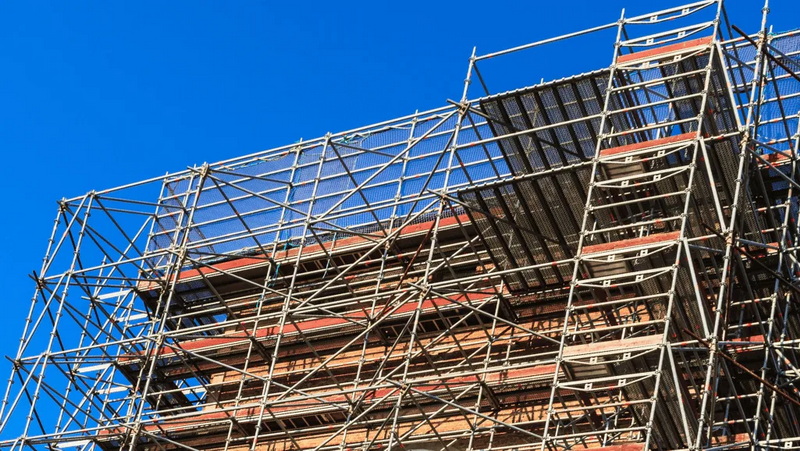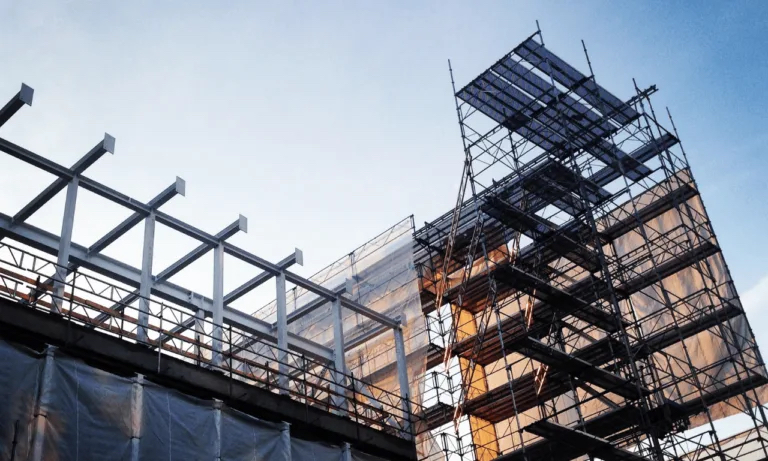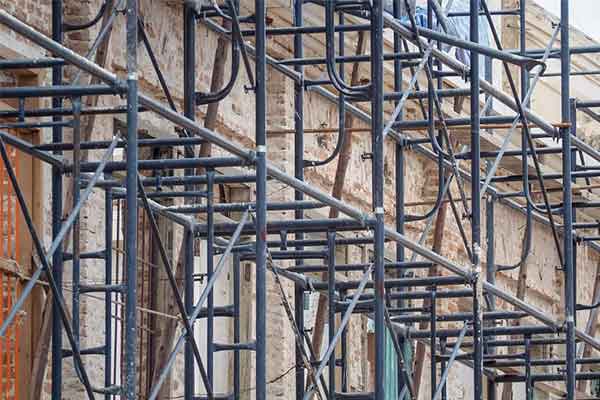Content Menu
● What Is Coupler Scaffolding?
● Structural Strength and Load Capacity of Coupler Scaffolding
>> Load Capacity of Tubes and Couplers
>> Comparison with Frame Scaffolding
>> Real-World Strength
● Types of Couplers and Their Roles
>> 1. Right Angle Couplers (Double Couplers)
>> 2. Swivel Couplers
>> 3. Sleeve Couplers
>> 4. Putlog Couplers (Board Retaining Couplers)
>> 5. Girder Couplers
>> 6. Base Plate Couplers
● Advantages of Coupler Scaffolding
● Safety Considerations for Coupler Scaffolding
● Maintenance and Longevity of Coupler Scaffolding
● Practical Applications of Coupler Scaffolding
● Additional Technical Insights
>> Load Distribution and Structural Behavior
>> Material Quality and Standards
● Environmental and Economic Considerations
● Conclusion
● FAQ
>> 1. How strong is coupler scaffolding compared to frame scaffolding?
>> 2. What types of couplers are used in coupler scaffolding?
>> 3. How important is proper tightening of couplers?
>> 4. Can coupler scaffolding be used for heavy-duty industrial projects?
>> 5. How should coupler scaffolding be maintained?
Coupler scaffolding, also known as tube and coupler scaffolding, is a widely used scaffolding system in construction and industrial projects due to its exceptional strength, adaptability, and reliability. This article provides an in-depth analysis of coupler scaffolding, focusing on its structural strength, load capacity, types of couplers, safety considerations, maintenance, and practical applications. Supported by detailed technical data, this guide aims to clarify why coupler scaffolding remains a preferred choice for complex and heavy-duty construction tasks.

What Is Coupler Scaffolding?
Coupler scaffolding consists of steel tubes connected by various types of couplers (also called clamps), which secure the tubes at different angles and configurations. Unlike frame scaffolding, which uses fixed frames, coupler scaffolding allows tubes to be joined at any angle, providing superior flexibility for irregular or complex structures.
The main components include:
- Steel Tubes: Typically 48.3 mm in diameter with a 4 mm wall thickness, made from high-strength steel with yield strength around 385 MPa and tensile strength about 457 MPa.
- Couplers: Forged steel clamps that connect tubes. Types include right angle couplers, swivel couplers, sleeve couplers, and more.
- Base Plates, Braces, and Accessories: For stability and safety.
Structural Strength and Load Capacity of Coupler Scaffolding
Load Capacity of Tubes and Couplers
- Right Angle Couplers: Have a typical working load limit (WLL) of 6.25 kN (approximately 637 kgf) against slip when tightened to a torque of 54 Nm. They provide rigid 90-degree connections essential for structural stability.
- Swivel Couplers: Allow connection at any angle with similar load capacities but are generally not used for primary load-bearing due to rotational flexibility.
- Steel Tubes: With a diameter of 48.3 mm and 4 mm wall thickness, tubes have a yield strength of 385 MPa and ultimate tensile strength of 457 MPa, making them capable of handling high compression and tension loads.
Comparison with Frame Scaffolding
- Tube and Coupler Scaffolding offers superior strength and adaptability, especially for complex or irregular structures, due to the ability to connect tubes at any angle.
- Frame Scaffolding typically supports uniform loads around 2 to 4 kN per frame bay and is better suited for straightforward, repetitive tasks on flat surfaces.
- Properly assembled coupler scaffolding can resist both tension and compression loads, making it highly reliable for heavy-duty applications.
Real-World Strength
Coupler scaffolding is engineered to support heavy materials, multiple workers, and extensive platforms. It is frequently used in industrial plants, petrochemical facilities, bridge construction, and other demanding environments where strength and stability are paramount.
Types of Couplers and Their Roles
1. Right Angle Couplers (Double Couplers)
- Connect tubes at 90 degrees.
- Provide the main structural framework.
- Made from drop forged carbon steel with hot-dip galvanization for corrosion resistance.
- Support loads exceeding 30 kN (approximately 3,000 kg or 6,700 lbs).
2. Swivel Couplers
- Connect tubes at any angle within 360 degrees.
- Used for diagonal bracing and complex scaffold geometries.
- Provide flexibility but less rigidity than right angle couplers.
3. Sleeve Couplers
- Connect tubes end-to-end to extend lengths.
- Maintain straight tube alignment.
- Essential for tall scaffolds requiring longer vertical standards.
4. Putlog Couplers (Board Retaining Couplers)
- Secure scaffold boards or planks to the scaffold frame.
- Ensure safe, stable working platforms.
5. Girder Couplers
- Attach scaffold tubes to steel girders or beams.
- Provide anchoring points for scaffolds on existing structures.
6. Base Plate Couplers
- Secure scaffold standards to base plates.
- Prevent sinking or shifting on uneven ground.

Advantages of Coupler Scaffolding
- High Versatility: Tubes and couplers can be assembled at any angle, allowing scaffolds to fit complex architectural shapes and contours.
- Robust Strength: Capable of supporting heavy loads, including materials and multiple workers.
- Customizable Heights and Configurations: Easily extended or reduced in height.
- Durability: Steel tubes and forged couplers with galvanization resist corrosion and wear.
- Wide Application Range: Suitable for construction, maintenance, industrial plants, bridges, and more.
Safety Considerations for Coupler Scaffolding
- Proper Assembly: All couplers must be tightened to the recommended torque (typically 54 Nm) to prevent slippage and ensure load capacity.
- Regular Inspections: Check for wear, corrosion, deformation, or damage to tubes and couplers.
- Use of Coupler Covers: Protective covers reduce injury risk from sharp edges and protect couplers from environmental damage.
- Training: Workers must be trained in scaffold erection, inspection, and safe use.
- Load Limits: Never exceed the rated load capacity of tubes and couplers.
- Bracing and Stability: Use cross braces and base plates to prevent swaying and displacement.
- Compliance: Follow local regulations and standards such as OSHA, BS1139, EN74, and AS/NZS 1576.
Maintenance and Longevity of Coupler Scaffolding
- Storage: Store tubes and couplers in dry, covered areas to prevent rust.
- Cleaning: Remove dirt, debris, and corrosion regularly.
- Lubrication: Apply anti-corrosion coatings or oils as needed.
- Replacement: Replace damaged or worn couplers immediately.
- Inventory Management: Keep track of coupler quantities and condition for timely maintenance.
Practical Applications of Coupler Scaffolding
- Industrial Plants: Maintenance and construction in petrochemical, power plants, and refineries.
- Bridge and Infrastructure Projects: Complex geometries require adaptable scaffolding.
- Commercial and Residential Construction: For irregular building shapes and multi-level access.
- Event Staging and Temporary Structures: Rapid assembly and disassembly.
- Restoration and Renovation: Access to historic or uniquely shaped buildings.
Additional Technical Insights
Load Distribution and Structural Behavior
Coupler scaffolding distributes loads through interconnected tubes and couplers, effectively transferring forces vertically and laterally. The system's modularity allows for the incorporation of diagonal bracing, which significantly enhances lateral stability and load resistance. The capacity to customize bracing arrangements makes coupler scaffolding particularly suited for structures subjected to dynamic loads, such as wind or seismic activity.
Material Quality and Standards
The steel used in coupler scaffolding must meet stringent quality standards to ensure strength and durability. Most scaffolding tubes comply with EN 39 or ASTM A53 standards, ensuring consistent mechanical properties. Couplers are typically manufactured from forged carbon steel and hot-dip galvanized to resist corrosion, extending service life even in harsh environments.
Environmental and Economic Considerations
Coupler scaffolding offers economic advantages by being reusable and adaptable, reducing the need for multiple scaffold types and sizes. Its durability minimizes replacement frequency, lowering material consumption and waste. Environmentally, the recyclability of steel and the potential for long-term reuse contribute to sustainable construction practices.
Conclusion
Coupler scaffolding is one of the strongest and most reliable scaffolding systems available, prized for its adaptability, load capacity, and durability. The combination of high-strength steel tubes and forged couplers enables the construction of stable, safe scaffolds tailored to complex and heavy-duty projects. With proper assembly, regular maintenance, and adherence to safety standards, coupler scaffolding provides a dependable platform for workers and materials across a wide range of construction and industrial applications.

FAQ
1. How strong is coupler scaffolding compared to frame scaffolding?
Coupler scaffolding generally offers superior strength and flexibility, with couplers rated for working loads around 6.25 kN and steel tubes capable of handling high tension and compression loads, making it ideal for complex and heavy-duty structures. Frame scaffolding is easier to assemble but supports lower uniform loads and is less adaptable.
2. What types of couplers are used in coupler scaffolding?
Common types include right angle couplers (for 90-degree connections), swivel couplers (for variable angles), sleeve couplers (for end-to-end tube joining), putlog couplers (for securing boards), girder couplers (for attaching to beams), and base plate couplers (for stabilizing the scaffold base).
3. How important is proper tightening of couplers?
Proper tightening, typically to a torque of 54 Nm, is critical to prevent slippage and ensure the scaffold's load capacity and stability. Under-tightening can lead to dangerous movement, while over-tightening can damage components.
4. Can coupler scaffolding be used for heavy-duty industrial projects?
Yes, especially when using forged steel joint pin couplers combined with swivel and fixed couplers. These systems are engineered to handle substantial loads and are common in industrial plants, bridges, and large-scale construction.
5. How should coupler scaffolding be maintained?
Regular inspection for wear and corrosion, cleaning, proper storage, lubrication, and timely replacement of damaged couplers are essential to maintain safety and extend service life.






















